Bamboo GHI Pinstripe | ball pythons for sale | Best 5
$999.99
Bamboo GHI Pinstripe | ball pythons for sale | Best 5 pythons | ball pythons for sale | clown clutch pairingfm | Buy Ball Python | het clown ch x
The Bamboo GHI Ball Python: A Fascinating Reptile for Reptile Enthusiasts
The *Bamboo GHI Ball Python* is a mesmerizing and unique breed in the world of reptiles. This captivating snake is the product of combining two distinctive morphs: the Bamboo and GHI (Genetic Stripe Het Influence). These two morphs create a visually stunning ball python with a range of striking patterns and colors, making it one of the most sought-after varieties among snake enthusiasts. Whether you’re an experienced reptile owner or new to the world of exotic pets, the *Bamboo GHI Ball Python* is sure to intrigue and captivate you.
In this article, we’ll explore everything there is to know about this fascinating python breed: its origins, characteristics, care requirements, and much more. If you’re considering purchasing a *bamboo python for sale*, this guide will provide all the information you need to make an informed decision and care for this beautiful snake.
Origins and Genetic Background
The *Bamboo GHI Ball Python* comes from two distinct morph lines:
1. *Bamboo Morph*: The Bamboo morph is a relatively new addition to the ball python world, discovered in the early 2000s. Bamboo pythons are known for their light, cream-colored bodies with reduced patterns, giving them a sleek, ghost-like appearance. Their unique color and soft undertones make them highly prized in the reptile community.
2. *GHI (Genetic Stripe Het Influence) Morph*: The GHI morph is equally impressive, first introduced in 2007. These pythons exhibit dark, bold patterning, with deep blacks and rich browns running along their body. The GHI morph has a distinctive stripe pattern, which contrasts beautifully against the lighter shades of the Bamboo morph.
When the Bamboo and GHI morphs are combined, the result is a snake with a rich tapestry of colors, patterns, and personality. The dark markings from the GHI morph complement the lighter shades of the Bamboo morph, resulting in a snake that is both elegant and exotic.
Appearance: A Visual Masterpiece
One of the main reasons why people are so drawn to the *Bamboo GHI Ball Python* is its extraordinary appearance. The combination of the two morphs creates a reptile with intricate and visually stunning patterns that seem to swirl across its body. The light, creamy tones from the Bamboo morph blend seamlessly with the deep, dark patterns from the GHI morph, giving the snake a unique and almost ethereal look.
*Bamboo GHI Ball Pythons* are also known for their glossy, smooth skin, which enhances their striking appearance. As they grow, these snakes maintain their stunning colorations, making them a perfect addition to any reptile collection.
While the *Bamboo GHI Ball Python* is visually impressive on its own, breeders have further expanded its potential by combining it with other morphs, such as the *Bamboo GHI Mojave Ball Python, creating even more unique and captivating snakes. This makes the **bamboo python for sale* a favorite among reptile enthusiasts and collectors.
Size and Lifespan
Like other ball pythons, the *Bamboo GHI Ball Python* is a medium-sized snake. On average, they reach lengths of about 3 to 5 feet when fully grown, with females typically being larger than males. They are a manageable size for most snake owners and do not require large enclosures or specialized setups like some of the larger snake species.
In terms of lifespan, *Bamboo GHI Ball Pythons* can live up to 20-30 years in captivity with proper care. This makes them a long-term commitment for any prospective owner, so it’s important to be prepared for the responsibility of caring for them over the years.
Temperament and Behavior
The *Bamboo GHI Ball Python* is known for its calm and docile temperament, making it a popular choice for both beginner and experienced snake owners. Ball pythons, in general, are gentle creatures, and the *Bamboo GHI* is no exception. These snakes rarely show aggression and are more likely to curl up in a ball (hence the name “ball python”) when they feel threatened or stressed.
They are relatively easy to handle, though it’s important to respect their boundaries and handle them with care. Regular, gentle handling can help them become more accustomed to human interaction, which further reinforces their reputation as a docile and manageable pet.
Though they are primarily nocturnal, *Bamboo GHI Ball Pythons* are not overly active, preferring to spend most of their time resting or coiled up in their enclosure. They are calm, low-maintenance pets, which makes them a great choice for individuals who want to own a snake but may not have the time or space for a more demanding reptile.
Care and Housing Requirements
When it comes to caring for a *Bamboo GHI Ball Python*, the most important factor is creating an environment that closely mimics their natural habitat. Ball pythons are native to the grasslands and savannas of West Africa, so they thrive in warm, humid conditions.
Enclosure Size and Setup
A *Bamboo GHI Ball Python* doesn’t require a large enclosure. A 20-gallon tank is suitable for a juvenile, but as your snake grows, it’s recommended to upgrade to a 40-gallon tank for a fully grown adult. The enclosure should have a secure lid, as ball pythons are known to be escape artists.
Inside the enclosure, provide your snake with:
– *Hiding spots*: Ball pythons feel safest when they have access to small, enclosed spaces where they can hide. Provide at least two hiding spots, one on the warm side of the enclosure and one on the cool side.
– *Climbing branches*: While ball pythons are primarily ground-dwellers, they occasionally enjoy climbing, so adding a sturdy branch or two can enrich their environment.
– *Water dish*: Provide a shallow dish of fresh water at all times. Ball pythons sometimes soak in their water dish, especially when preparing to shed.
– *Substrate*: Use a soft substrate such as coconut fiber, cypress mulch, or aspen shavings. Avoid cedar or pine, as these can be toxic to reptiles.
Heating and Humidity
Ball pythons are cold-blooded animals, so they rely on their environment to regulate their body temperature. Create a temperature gradient in the enclosure, with one side kept warm at about 88-92°F (using a heat lamp or heating pad) and the other side cooler, around 75-80°F. This allows the snake to move between different temperature zones to regulate its body heat.
Humidity should be kept at around 50-60%, though it can be raised to 70% when your snake is shedding. Use a hygrometer to monitor humidity levels, and mist the enclosure lightly if necessary. Proper humidity is essential for your *Bamboo GHI Ball Python* to shed its skin properly and stay hydrated.
Diet and Feeding
*Bamboo GHI Ball Pythons* are carnivores, feeding primarily on small rodents like mice or rats. As juveniles, they can be fed appropriately sized mice, and as they grow, their diet should be adjusted to larger prey like rats.
It’s important to feed your python prey items that are no larger than the widest part of their body to avoid potential choking or digestive issues. Ball pythons typically eat once every 1-2 weeks, depending on their age and size.
Fresh water should be available at all times, and it’s essential to maintain a regular feeding schedule to ensure that your snake remains healthy and well-nourished.
Purchasing a Bamboo GHI Ball Python
If you’re looking to add a *Bamboo GHI Ball Python* to your collection, it’s important to find a reputable breeder or pet shop that specializes in exotic reptiles. The demand for these pythons is high, and it’s essential to purchase from a source that provides healthy, captive-bred snakes.
Prices for *Bamboo GHI Ball Pythons* can vary depending on their genetics, age, and morph combinations. A *bamboo python for sale* may range in price from $300 to $1,500 or more, especially if combined with other morphs like *Bamboo GHI Mojave Ball Pythons*, which can command a higher price due to their unique patterning.
Always ensure that the breeder or seller provides information on the snake’s health, feeding schedule, and housing requirements. Proper documentation is essential, and it’s a good idea to ask about the snake’s lineage, particularly if you’re purchasing one for breeding purposes.
Conclusion: A Stunning Addition to Any Reptile Collection
The *Bamboo GHI Ball Python* is not only visually stunning but also makes for a wonderful pet due to its manageable size and calm temperament. Whether you’re new to reptile keeping or a seasoned enthusiast, this python morph is sure to impress. With proper care, a healthy environment, and a commitment to its long-term well-being, the *Bamboo GHI Ball Python* will make an excellent addition to any reptile lover’s collection.
As you look for *bamboo pythons for sale, be sure to research reputable breeders, consider the long-term care requirements, and be prepared to provide a safe and enriching environment for your new pet. Whether you’re looking for a **Bamboo GHI Ball Python* or a more unique variety like the *Bamboo GHI Mojave Ball Python*, this stunning snake is sure to bring joy to your life for years to come.
—
If you’d like further customizations or morecontent, feel free to let me know. Here’s the continuation of the guide on *Bamboo GHI Ball Python* care and considerations:
Common Health Issues and How to Avoid Them—
Like all reptiles, *Bamboo GHI Ball Pythons* can be prone to certain health issues if not cared for properly. Here are some common health concerns for ball pythons and how to avoid them:
1. *Respiratory Infections*:
Respiratory infections are common in ball pythons when they are kept in environments with inadequate temperature or humidity levels. Symptoms include wheezing, nasal discharge, and lethargy. To avoid this, ensure that your python’s enclosure maintains proper temperature and humidity, and that the enclosure is clean and free of excess moisture or bacteria.
2. *Shedding Problems (Dysecdysis)*:
Ball pythons typically shed their skin every few weeks, especially as juveniles. If humidity levels are too low, your snake may have difficulty shedding. Ensure that the humidity is kept at 50-60% and increase it to around 70% when you notice your python is about to shed (their eyes will turn a bluish color). Providing a moist hide or misting the enclosure lightly can help with shedding.
3. *Mites*:
Reptile mites are small parasites that can infest your snake’s skin, leading to irritation, stress, and infection. Regularly inspect your snake’s skin and the enclosure for signs of mites. If you notice mites, clean the enclosure thoroughly and consult a veterinarian for mite treatment.
4. *Mouth Rot (Infectious Stomatitis)*:
Mouth rot is an infection that can develop due to poor enclosure conditions or stress. Signs of mouth rot include swelling, pus, or discharge around the snake’s mouth. Keeping the enclosure clean and maintaining a stress-free environment will help prevent this. If your snake shows signs of mouth rot, seek veterinary care immediately.
5. *Internal Parasites*:
Parasites like worms can be an issue for ball pythons if they ingest contaminated food. Always buy your feeder mice or rats from a reputable source to ensure they are free of parasites. Regular veterinary check-ups and stool tests can help detect and treat internal parasites.
Enrichment and Handling Tips
While *Bamboo GHI Ball Pythons* are relatively low-maintenance compared to other pets, providing enrichment and handling them correctly can make a significant difference in their well-being.
Enrichment:
Ball pythons aren’t the most active snakes, but providing some form of environmental enrichment can help keep them stimulated and healthy. Consider adding the following to your python’s enclosure:
– *Climbing Structures*: Although primarily ground-dwelling, ball pythons enjoy the occasional climb. Sturdy branches, rocks, and artificial vines can provide a safe way for them to explore.
– *Hides*: Ball pythons feel most secure when they have a dark, enclosed space to hide in. Make sure your python has at least two hides in its enclosure, one on the warm side and one on the cooler side.
– *Variety in Substrate*: Introducing different textures in the enclosure (like coconut fiber or cypress mulch) can provide a richer sensory experience for your python.
– *Exploration Time*: Letting your snake explore outside its enclosure in a safe, controlled environment can also be an enriching experience for them.
Handling Tips:
When it comes to handling your *Bamboo GHI Ball Python*, here are a few best practices:
– *Start Slow*: If your python is new, give it time to adjust to its new environment before attempting to handle it. Typically, waiting a week or two after you bring it home is best.
– *Support the Body*: Always support the snake’s body with both hands while handling it. Ball pythons like to feel secure, and providing support will reduce their stress.
– *Respect Their Boundaries*: If your python is balled up or appears stressed, give it space. Forcing handling when a snake is stressed can lead to defensive behavior.
– *Consistency*: Regular, gentle handling (around once or twice a week) can help your python become more accustomed to human interaction. Over-handling, however, can cause stress, so be mindful of how frequently you engage with your snake.
Breeding Bamboo GHI Ball Pythons
For those interested in breeding *Bamboo GHI Ball Pythons, it’s essential to understand the genetics and best practices for breeding ball pythons. Breeding ball pythons can be both a rewarding and profitable endeavor, especially with rare and unique morphs like the **Bamboo GHI*.
Breeding Basics:
Ball pythons reach sexual maturity at around 2-3 years of age. Females typically need to weigh at least 1,500 grams before they are ready to breed, while males can breed at a lighter weight.
1. *Introduce the Pair*: Once both snakes are of breeding age and size, introduce the male and female into the same enclosure. You may need to observe them for a while to ensure they are getting along and that the male is attempting to court the female.
2. *Incubation*: After successful breeding, the female will lay a clutch of eggs, usually around 4-8 eggs. These eggs need to be incubated at a consistent temperature of 88-90°F with humidity levels around 80-90%. Incubation typically lasts for 55-60 days.
3. *Hatchlings*: Once the eggs hatch, the baby snakes are incredibly small but fully capable of feeding on small pinky mice within a week or two. Proper care and husbandry are essential during this stage to ensure the hatchlings grow into healthy adult pythons.
Pricing and Market:
Due to the *Bamboo GHI Ball Python’s* unique and striking appearance, they can command high prices in the reptile market. The price of a *Bamboo GHI Ball Python for sale* can range anywhere from $300 to $1,500 or more, depending on the morph combination, age, and the rarity of the snake’s pattern.
For example, a *Bamboo GHI Mojave Ball Python* may fetch an even higher price due to the added rarity and intricate patterning brought by the Mojave morph.
Final Thoughts: A Captivating and Low-Maintenance Pet
If you’re considering purchasing a *Bamboo GHI Ball Python*, you’re choosing a truly unique and visually stunning snake. Their calm temperament, moderate size, and manageable care requirements make them a great pet for both beginner and experienced reptile owners. With proper care, this snake can thrive in captivity and provide years of companionship.
Before purchasing, ensure that you’re ready to provide the right environment and long-term care, as ball pythons can live for several decades. If you’re interested in adding a *Bamboo GHI Ball Python* or another morph like the *Bamboo GHI Mojave Ball Python* to your collection, research reputable breeders and ask plenty of questions to ensure you’re getting a healthy, captive-bred snake.
Whether you’re drawn to their exotic appearance or their calm demeanor, the *Bamboo GHI Ball Python* is a fantastic addition to any reptile lover’s collection.
I hope this completes the content for your website. Let me know if you need more edits or additions!!






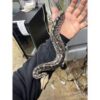
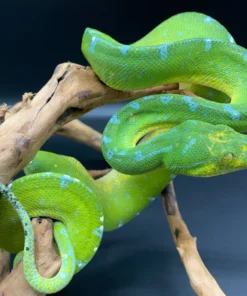

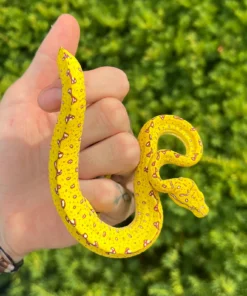

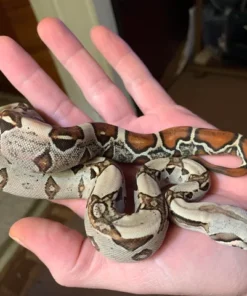
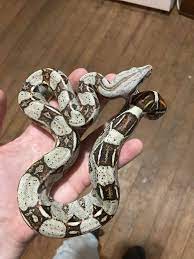
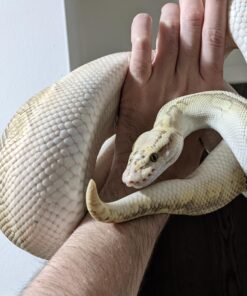


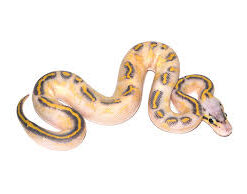
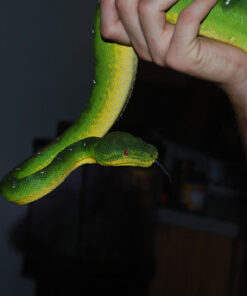

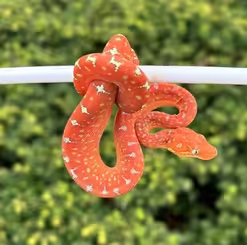
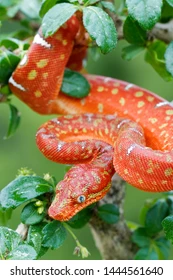

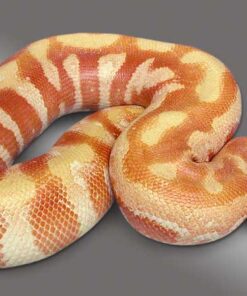
Reviews
There are no reviews yet.